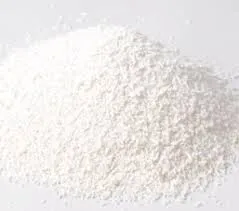
Exploring the Benefits and Uses of Sweetener 20953 in Modern Food Products
The Impact and Insights of Sweetener 953 A Closer Look
In the realm of food and beverage production, sweeteners play a crucial role in enhancing flavor while often reducing the caloric content of products. One such sweetener that has garnered attention in recent years is Sweetener 953, also known as Acesulfame K (Ace-K). This high-intensity sweetener offers many advantages and poses certain considerations for consumers and manufacturers alike.
Acesulfame K was first approved for use in food products in the 1980s, and since then, it has gained popularity, particularly among those seeking lower-calorie options. Its sweetness intensity is estimated to be around 200 times that of sucrose (table sugar), allowing food manufacturers to use it in very small quantities to achieve the desired sweetness. The widespread use of Ace-K can be found in a variety of products, including soft drinks, baked goods, and sugar-free candies.
The Impact and Insights of Sweetener 953 A Closer Look
Moreover, Acesulfame K exhibits excellent stability when exposed to heat, making it suitable for a range of food processing methods, including baking. This quality sets it apart from some other artificial sweeteners that may lose their sweetness when subjected to high temperatures. This characteristic allows manufacturers to create a diverse array of products that can cater to health-conscious consumers without compromising on flavor.
sweetener 953

However, despite its benefits, the use of Sweetener 953 has not been without controversy. There are ongoing debates surrounding the safety and potential health effects of artificial sweeteners. Some studies have raised concerns about the long-term consumption of Acesulfame K, suggesting possible links to metabolic disorders or negative effects on gut health. Regulatory bodies, including the Food and Drug Administration (FDA) and the European Food Safety Authority (EFSA), have conducted extensive evaluations of Acesulfame K and deemed it safe for consumption within established acceptable daily intake levels. Nevertheless, consumer awareness and skepticism persist, leading many to prefer natural sweetener alternatives.
In addition, there is a segment of the population that has developed a sensitivity to artificial sweeteners, including Acesulfame K. For these individuals, consuming products containing Ace-K may lead to unpleasant reactions, which further complicates its acceptance in the market. This aspect underscores the necessity for clear labeling and transparent information regarding the ingredients in food products, empowering consumers to make informed choices.
The global market for sweeteners continues to evolve, with increasing demand for healthier options pushing food manufacturers to explore a wide range of sweetener types. Sweetener 953 remains one of the leading artificial sweeteners despite the growing popularity of natural alternatives like stevia and monk fruit extract. As consumers become more discerning, companies must balance taste, health, and transparency in their product offerings.
In conclusion, Sweetener 953 (Acesulfame K) illustrates the complex interplay of food science, health trends, and consumer preferences. It offers a low-calorie alternative to sugar, meeting the demands of a health-conscious market, while simultaneously navigating safety concerns and individual sensitivities. As the food industry continues to innovate, the role of sweeteners like Acesulfame K will likely remain significant, driving discussions about nutrition, health, and flavor in our daily diets. Whether one embraces it or chooses to avoid it, the presence of Sweetener 953 will undoubtedly continue to shape our culinary landscape.
-
Buy High-Quality Trichloroisocyanuric Acid for Sale | TCCA 90% SupplierNewsAug.30,2025
-
Pure Sodium Dichloroisocyanurate Dihydrate | Powerful DisinfectantNewsAug.29,2025
-
Industrial Chemicals: Quality & Purity for Every IndustryNewsAug.28,2025
-
Nitrile Rubber Honoring Strict Production StandardsNewsAug.22,2025
-
Aspartame Ingredients Honoring Food Safety ValuesNewsAug.22,2025
-
Fertilizer for Balanced Plant NutritionNewsAug.22,2025
-
Cyanide Gold Processing with High Purity AdditivesNewsAug.22,2025
Hebei Tenger Chemical Technology Co., Ltd. focuses on the chemical industry and is committed to the export service of chemical raw materials.
-

view more DiethanolisopropanolamineIn the ever-growing field of chemical solutions, diethanolisopropanolamine (DEIPA) stands out as a versatile and important compound. Due to its unique chemical structure and properties, DEIPA is of interest to various industries including construction, personal care, and agriculture. -

view more TriisopropanolamineTriisopropanolamine (TIPA) alkanol amine substance, is a kind of alcohol amine compound with amino and alcohol hydroxyl, and because of its molecules contains both amino and hydroxyl. -

view more Tetramethyl Thiuram DisulfideTetramethyl thiuram disulfide, also known as TMTD, is a white to light-yellow powder with a distinct sulfur-like odor. It is soluble in organic solvents such as benzene, acetone, and ethyl acetate, making it highly versatile for use in different formulations. TMTD is known for its excellent vulcanization acceleration properties, which makes it a key ingredient in the production of rubber products. Additionally, it acts as an effective fungicide and bactericide, making it valuable in agricultural applications. Its high purity and stability ensure consistent performance, making it a preferred choice for manufacturers across various industries.





